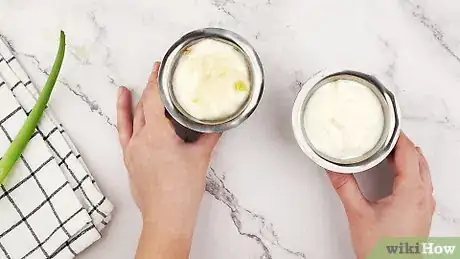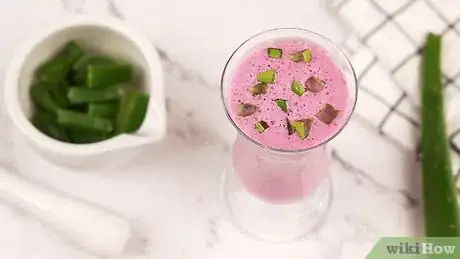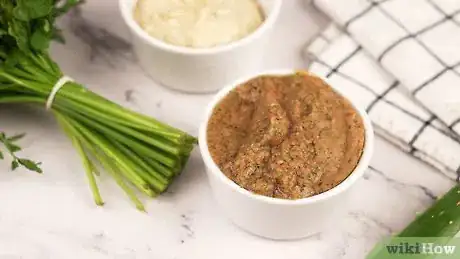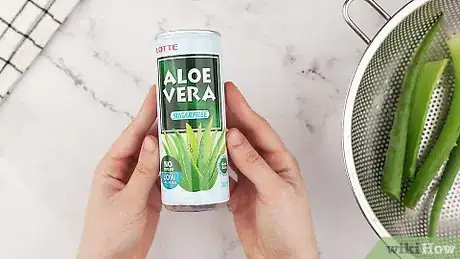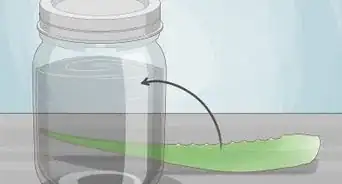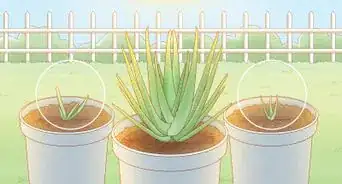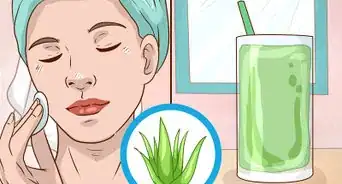This article was co-authored by Luba Lee, FNP-BC, MS and by wikiHow staff writer, Jennifer Mueller, JD. Luba Lee, FNP-BC is a Board-Certified Family Nurse Practitioner (FNP) and educator in Tennessee with over a decade of clinical experience. Luba has certifications in Pediatric Advanced Life Support (PALS), Emergency Medicine, Advanced Cardiac Life Support (ACLS), Team Building, and Critical Care Nursing. She received her Master of Science in Nursing (MSN) from the University of Tennessee in 2006.
There are 11 references cited in this article, which can be found at the bottom of the page.
wikiHow marks an article as reader-approved once it receives enough positive feedback. In this case, 92% of readers who voted found the article helpful, earning it our reader-approved status.
This article has been viewed 328,981 times.
Aloe vera can soothe sunburned skin, but does it help to eat or drink it? Some claim eating aloe vera can relieve a number of common health conditions, including heartburn, constipation, ulcers, and inflammation of the gastrointestinal tract. While clinical evidence to support these claims is sparse, aloe vera is a common food source in many cultures, particularly in Asia and Latin America.[1] Here, we'll tell you what you need to know to choose the right aloe vera variety, prepare it, and add it to your favorite recipes.
Steps
Expert Q&A
-
QuestionCan I apply aloe vera to my scar even if I don't have honey?
 Luba Lee, FNP-BC, MSLuba Lee, FNP-BC is a Board-Certified Family Nurse Practitioner (FNP) and educator in Tennessee with over a decade of clinical experience. Luba has certifications in Pediatric Advanced Life Support (PALS), Emergency Medicine, Advanced Cardiac Life Support (ACLS), Team Building, and Critical Care Nursing. She received her Master of Science in Nursing (MSN) from the University of Tennessee in 2006.
Luba Lee, FNP-BC, MSLuba Lee, FNP-BC is a Board-Certified Family Nurse Practitioner (FNP) and educator in Tennessee with over a decade of clinical experience. Luba has certifications in Pediatric Advanced Life Support (PALS), Emergency Medicine, Advanced Cardiac Life Support (ACLS), Team Building, and Critical Care Nursing. She received her Master of Science in Nursing (MSN) from the University of Tennessee in 2006.
Board-Certified Family Nurse Practitioner Yes. The aloe vera will still help improve your skin's condition even without honey.
Yes. The aloe vera will still help improve your skin's condition even without honey.
Warnings
- If you're considering eating aloe vera to treat a health condition, talk to your doctor first—they'll let you know if it's safe and can suggest other options if it's not.[22]⧼thumbs_response⧽
- Many of the alleged benefits of eating aloe vera aren't supported by scientific evidence. Eat aloe vera at your own risk with the understanding that there are concerns about long-term use.[23]⧼thumbs_response⧽
References
- ↑ https://www.ncbi.nlm.nih.gov/books/NBK92765/
- ↑ https://deepgreenpermaculture.com/2019/04/16/identifying-and-growing-edible-aloe-vera/
- ↑ https://www.thestar.com/life/food_wine/recipes/2020/10/18/curious-about-using-aloe-vera-in-cooking-heres-how-to-butcher-and-prepare-it.html
- ↑ https://www.nccih.nih.gov/health/aloe-vera
- ↑ https://www.ncbi.nlm.nih.gov/pmc/articles/PMC6349368/
- ↑ https://www.nccih.nih.gov/health/aloe-vera
- ↑ https://www.ncbi.nlm.nih.gov/pmc/articles/PMC3551117/
- ↑ https://www.ncbi.nlm.nih.gov/pmc/articles/PMC3551117/
- ↑ https://www.ncbi.nlm.nih.gov/pmc/articles/PMC3551117/
- ↑ https://www.mayoclinic.org/drugs-supplements-aloe/art-20362267
- ↑ https://www.shape.com/weight-loss/food-weight-loss/ask-diet-doctor-truth-about-aloe-vera-juice
- ↑ https://www.thestar.com/life/food_wine/recipes/2020/10/18/curious-about-using-aloe-vera-in-cooking-heres-how-to-butcher-and-prepare-it.html
- ↑ https://www.thestar.com/life/food_wine/recipes/2020/10/18/curious-about-using-aloe-vera-in-cooking-heres-how-to-butcher-and-prepare-it.html
- ↑ https://norecipes.com/poached-aloe-recipe/
- ↑ https://www.myrecipes.com/how-to/cooking-questions/how-to-eat-aloe-vera
- ↑ https://www.myrecipes.com/how-to/cooking-questions/how-to-eat-aloe-vera
- ↑ https://www.shape.com/weight-loss/food-weight-loss/ask-diet-doctor-truth-about-aloe-vera-juice
- ↑ https://www.ncbi.nlm.nih.gov/pmc/articles/PMC6349368/
- ↑ https://www.ncbi.nlm.nih.gov/books/NBK92765/
- ↑ https://www.pennmedicine.org/updates/blogs/health-and-wellness/2019/august/aloe
- ↑ https://www.myrecipes.com/how-to/cooking-questions/how-to-eat-aloe-vera
- ↑ https://www.pennmedicine.org/updates/blogs/health-and-wellness/2019/august/aloe
- ↑ https://www.ncbi.nlm.nih.gov/books/NBK92765/
About This Article
To eat aloe vera, start by cutting the leaves into 3-4 inch sections. Then, cut off the spiky side and the flat green skin from each section, which you don’t want to eat. Once you’ve removed the skins, use a spoon to scoop the gel out and store it in a container, which you can use as a lotion later. After you’ve removed the gel, wash the remaining plant to get rid of any dirt and debris. If you don’t want to eat the plant raw, try blending it into a smoothie or adding chunks to your favorite salad. For more tips, including how to use aloe vera gel in healthy recipes, read on!

